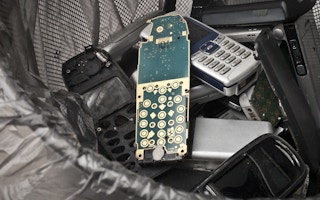Three billion new middle-class consumers are expected to enter global markets in the next 15 years, taking on the lifestyles and technologies of established economies. That means demand for more infrastructure and more technology, which means demand for more metals.
How to supply that demand is of increasing concern. “The era of cheap and easily available resources is passing,” says Dr Damien Giurco, research director of the Institute of Sustainable Futures and leader of the Wealth from Waste cluster.
Based at the University of Technology Sydney (UTS) but involving collaborations with CSIRO, Monash University, University of Queensland, Swinburne University of Technology and Yale University in the United States, the Wealth to Waste program is focused on how Australia can look beyond the mineral resources found below ground.
The researchers will identify new business models and technical innovations to process “urban mining” commodities – the metals found in discarded products in homes or businesses or locked up in landfill.
Disposing of our disposable culture
Unlocking the potential of above-ground metal stocks is essential if Australia is to maintain a competitive advantage. “We need to look ahead to see where Australia would fit in a world where one of the really significant economic opportunities is a change of thinking around circular economies,” says Giurco.
“
The era of cheap and easily available resources is passing.
Damien Giurco, research director of the Institute of Sustainable Futures
The concept of the circular economy isn’t entirely new, having its root in the “cradle-to-cradle” approach that has been the bedrock of sustainable design.
However, it sees a mainstreaming of the idea and the broader application of “closed loop” thinking. At its core is the idea that we need to transition from a “take-make-dispose” economy in which resources are mined, used for manufacture, then discarded.
In a circular economy, in addition to more recycling, there is a shift in industrial production models. Companies start to close the loop on their daily productions, not just producing products but also taking them back at end-of-life to extract valuable materials that can be used to produce new items.
It requires a shift in thinking for businesses, away from a model where revenue is generated via a product’s inbuilt obsolescence and by pushing consumers to buy a new product rather than repair an old one.
Circular economy businesses are structured around services and product upgrades, coupled with a more efficient approach to energy and resources.
One company exploring how this might apply is Puzzlephone. The phone is designed to last 10 years and includes three parts that can be easily customised, replaced or upgraded: a “brain” with the main electronics, a “heart” with the battery, and a “spine” with an LCD screen. Google is working on a similar concept, the Project Ara with both products expected to be released in 2015/16.
Recycling our approach to recycling
As the Puzzlephone demonstrates, achieving a circular economy isn’t just about having a will to find a way – there is a need for new thinking and new technology.
For the researchers at UTS, their focus in the Wealth from Waste program is on building new business models to support circular economies. A key concern is how Australia can build capacity to process our own waste.
The world is experiencing historically low recycling rates. In an era where energy efficiency and the need to transition from fossil fuels to renewable energy sources is increasingly urgent, this is of huge concern.
Recycling requires significantly less energy per kilogram of metal produced than primary production. It can also help mitigate the local impacts of mining on communities.
This article is originally published by Australian Ethical. Please continue reading here.










